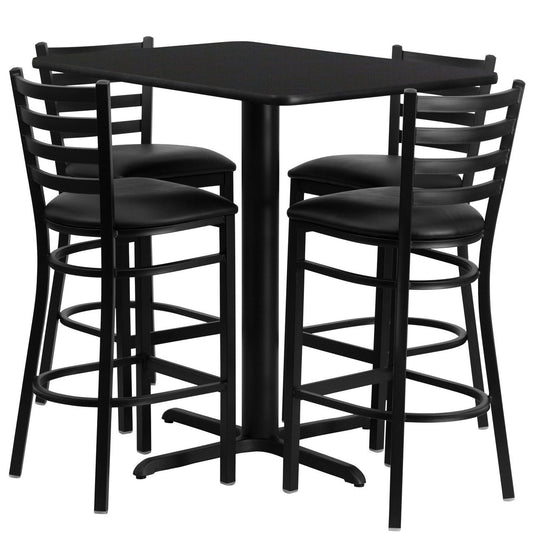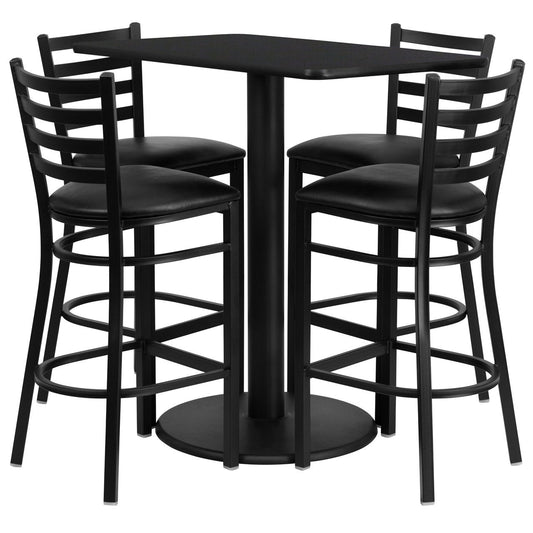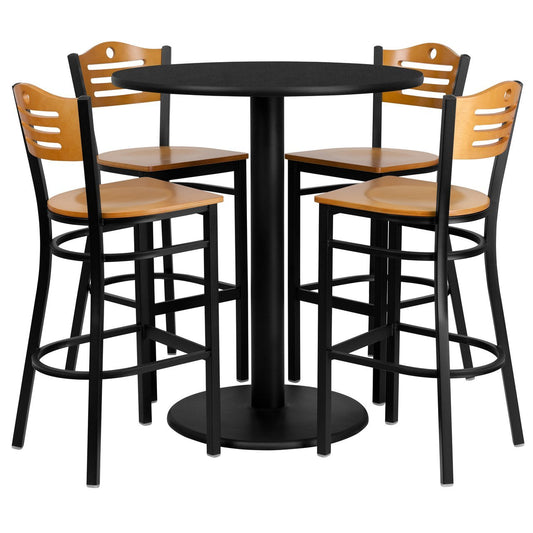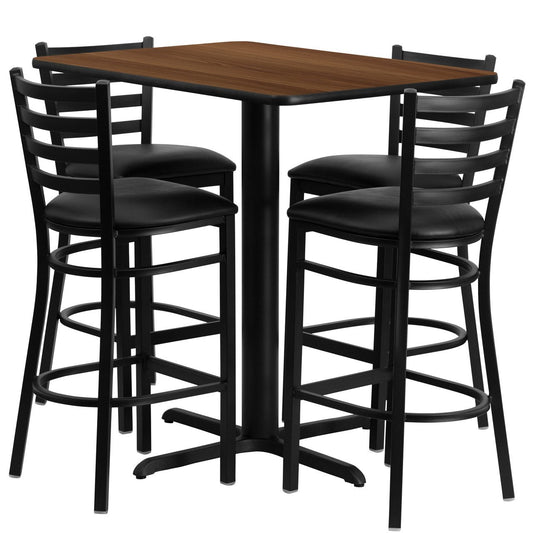
Pros and Cons of Counter Height vs. Bar Height
Share
When setting up seating for your cafe or restaurant, there is much more to consider than style. You want to make sure your customers feel comfortable, that the space works well for your layout, and that your furniture supports the vibe you are going for. One of the most common decisions restaurant owners face is whether to go with counter-height or bar-height furniture.
At Wholesale Bar Stool Club, we have been helping business owners decide on the best furniture for nearly 15 years. Choosing the right height is a bit tricky, but don't worry! We will help break down both counter-height and bar-height furniture so you can make an informed decision for your cafe or restaurant.
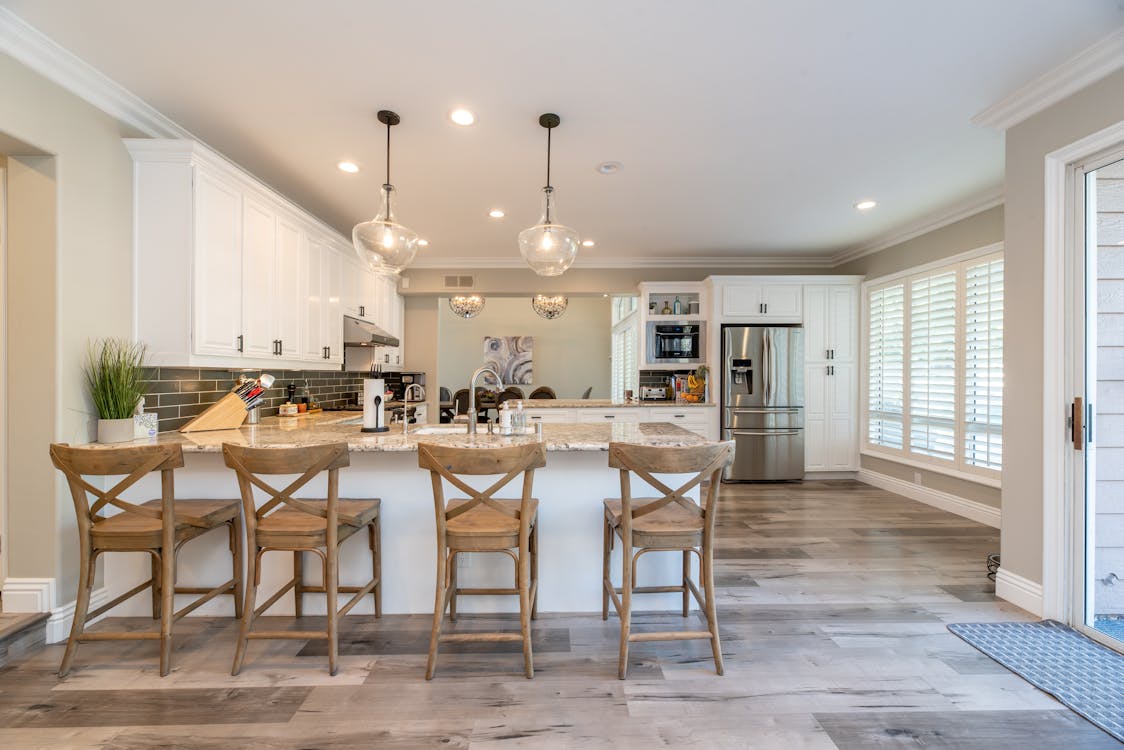

24'' Round Black Laminate Table Top with 22'' x 22'' Bar Height Table Base
Complete your restaurant, break room or cafeteria with this bar height table top and base configuration. This set is designed for Indoor Indoor Commercial Use to withstand the daily rigors in the hospitality industry. This set will also make a great option for your home as a dining table or in the rec room.
Counter Height vs. Bar Height: What's the Difference?
Let’s quickly review the difference between counter height and bar height furniture so you’re clear on what each term means:
Quick Comparison
|
Feature |
Counter Height |
Bar Height |
|
Table Height |
34–36 inches |
40–42 inches |
|
Chair/Stool Height |
24–26 inches |
28–30 inches |
|
Great For |
Casual cafés, family settings |
Trendy spots, social lounges |
|
Space Needs |
More room needed |
Saves space in tight areas |
|
Style |
Relaxed and casual |
Sleek and modern |
Now, let us discuss the benefits and drawbacks of each.
Pros of Counter Height Furniture
The truth behind this design is that counter height seating is very common in most cafes and restaurants, and here's why you should consider it for your space:
1. Comfort and Accessibility
Counter-height seating tends to be accessible for a wide range of customers—kids and adults alike—to sit at. Because it's a comfortable distance from the floor, one that can be easily leaned against or sat on, even older customers will find easy access. Customers can quite easily pull up a chair or stool and relax without feeling too high or too low. Families and older customers will, therefore, find this easier to access.
2. Casual and Cozy Feeling
The best part of counter-height furniture is that it creates a laid-back, casual atmosphere. It is not too formal, so your cafe or restaurant can feel warm and welcoming. Counter-height furniture encourages customers to stay a little longer to enjoy their meals without the discomfort of being rushed.
3. Flexibility in Design
Another great benefit of counter-height furniture is its versatility. Since counter-height tables are similar to traditional dining tables, they blend easily with other types of seating for every restaurant. If you’re trying to create a mix of styles or need a layout that includes both low and high seating, counter-height furniture can work well in your overall design.
4. Great for Smaller Spaces
Counter-height furniture is generally shorter than bar-height furniture and is ideal for smaller cafes or restaurants, as there is more available space for seating. For a tight space, the counter height will be of better assistance in optimizing available space.
Looking to make the most of your layout? Browse our collection of metal counter height stools and find the perfect fit for your space today.
Cons of Counter Height Furniture
There are several disadvantages to using counter-height furniture:
1. Not as Trendy
If you're looking for a sleek, modern vibe, counter-height furniture might not give you the look you're after. Bar-height seating is often associated with a more upscale or trendy environment, while counter-height can sometimes feel more casual or homey.
2. Takes Up More Room
Counter-height seating does, however, provide space optimization benefits, which in turn make it occupy a larger floor area compared to a low dining setting. If the floor space available is not much, it can somewhat make your cafe feel small, especially considering the much more compact and cozy look that bar-height seating brings.

24'' Round Mahogany Laminate Table Top with 22'' x 22'' Bar Height Table Base
Complete your restaurant, break room or cafeteria with this bar height table top and base configuration. This set is designed for Indoor Indoor Commercial Use to withstand the daily rigors in the hospitality industry. This set will also make a great option for your home as a dining table or in the rec room. The reversible black or mahogany top allows you to choose your color of choice and then affix to the base.
Pros of Bar Height Seating
Bar-height seating isn't for bars alone. Restaurants and cafes also benefit from this modern furniture as a way to create a lively, contemporary space. Here's why you might choose bar-height furniture:
1. Space-Saving Design
One of the main reasons bar-height furniture is wonderful is that it's more compact. Taller chairs and tables take up less floor space, and if you have a rather small cafe or restaurant, you can fit a lot of seating in a much smaller space. Also, the heights of the tables open the space up greatly, allowing for an airy feel to your dining area.
2. Modern, Trendy Look
Bar-height tables and stools are sleek stylish, and with a more modern or industrial feel. They are perfect if your restaurant has a contemporary vibe. They really add to your space and appeal to younger, trendier crowds. They're perfect for creating that lively, energetic atmosphere.
3. Fosters Social Interaction
Bar-height seating is ideal for creating a social atmosphere. Customers are more likely to interact with each other in closer, taller seats. If you’re running a bar area or a more social dining space, bar-height tables help encourage conversation and interaction, which can lead to a more engaging customer experience.
4. Great for Larger Spaces
If your restaurant or cafe has a huge space, breaking it up can create particular zones using bar-height furniture. This would allow segregating the area where people dine from the main bar or having even higher seating levels for persons in more high-traffic situations. Such design enhances how your space flows and allows it to be perceived as dynamic.
Discover our collection of metal bar height stools and bring structure to your large space today.
Cons of Bar Height Furniture
But then there are a few problems when it comes to bar-height furniture:
1. It's Not Always Comfortable for everyone
Bar chairs aren't always the coziest for everyone in your establishment. Some diners might feel uncomfortable sitting at a higher table-especially older patrons or those in wheelchairs. With a more diverse clientele, you need to balance such requirements of not being as comfortable.
2. Can Feel Less Relaxed
If your restaurant is more of a casual or family-oriented spot, bar-height furniture can sometimes feel too formal or uncomfortable. The taller height may make the dining experience feel less laid-back, which could be a downside if you want customers to linger longer.
3. Stability Issues
As bar-height seating is taller, it can be less stable than counter-height options. In busy spaces with lots of movement, bar stools can be more prone to tipping, especially in crowded areas. For high-traffic restaurants, this is something to keep in mind when designing your space.

30'' Round Natural Laminate Table Set with 4 Ladder Back Metal Barstools - Burgundy Vinyl Seat
Complete your restaurant, break room or cafeteria with this bar height table top and base configuration. This set is designed for Indoor Indoor Commercial Use to withstand the daily rigors in the hospitality industry. This set will also make a great option for your home as a dining table or in the rec room. The reversible black or mahogany top allows you to choose your color of choice and then affix to the base.
How to Choose the Right Seating for Your Cafe or Restaurant
It is not easy to choose between counter-height and bar-height furniture, but it all depends on the space you have and the vibe you want to create. Here are some tips to help you decide:
Consider your space:
If you have a small cafe or restaurant, it may be better to utilize bar-height seating, which maximizes your space. Larger spaces will work well with both types, but counter-height seating can help make larger spaces feel more intimate.
Think about your customers:
Who are you serving? If you're serving families, then comfort and accessibility are going to be more in line with counter-height furniture. If you're catering to a younger, trendier crowd, then bar height is the way to go.
Think about your design goals:
Are you aiming for a sleek, modern look or a cozy, casual vibe? Bar-height furniture lends itself to more of an upscale feel, while counter-height furniture gives off a relaxed atmosphere.

30'' Round Walnut Laminate Table Set with 4 Ladder Back Metal Barstools - Burgundy Vinyl Seat
Are you short on time and don't have the energy to browse through hundreds of table and seating options? Check out our complete Bar Height Table and Stool set, designed to save you time and allow you to focus on growing your business. This set comes with a stunning Walnut Laminate Table Top, X-Base, and 4 Metal Ladder Back Barstools that are heat, scratch, and moisture resistant.
Conclusion
Counter-height and bar-height furniture each have their own place in cafes and restaurants. The best choice depends on your space, the vibe you want to create, and your customers' needs. Whether you choose counter height for its comfort and versatility or bar height for its trendy and space-saving design, durable metal bar stools are a stylish option for both settings.
At Wholesale Bar Stool Club, we offer a wide range of commercial bar stools, chairs, and tables to fit your needs. Explore our collection to find the perfect seating options for your restaurant.
No matter what you choose, we're here to help you create a comfortable, stylish space for your customers!

